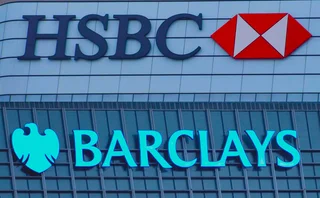
Called to account

Mark-to-market accounting has emerged as one of the bogeymen of the financial crisis over the past few months. Having been criticised by bankers for some time as exacerbating the crisis, calls have been steadily growing among regulators and politicians on both sides of the Atlantic to suspend or even scrap fair-value accounting for illiquid assets (see page 10).
As Risk reported last November1, dealers have complained that mark-to-market valuations are laying waste to their portfolios. Most agree low market values, caused by a drying up of liquidity and investor fear, have meant funds have faced increased margin calls and redemption requests, forcing them to sell assets at fire-sale prices. This pushes prices down further, causing market participants to re-mark their books, creating another wave of margin calls and forced sales. Looking purely at the fundamental credit risk, some structured credit transactions - particularly those referenced to corporate credit - should be trading at higher prices, claim dealers.
Proponents of mark-to-market counter that if a fund or dealer were to collapse today, the market price is the level at which they would be able to dispose of their assets. To use any other measure, they argue, would be misleading to shareholders.
It certainly seems true that scrapping mark-to-market would not be the panacea to the market's problems. Back in 2003, the Japanese banking system was on the verge of collapse, with local banks weighed down by trillions of yen worth of non-performing loans (NPLs). In this instance, doubts over whether banks were realistic in their valuations of impaired assets, and fears the true size of NPLs could be much higher, eventually led to a crisis of confidence in the banking sector. At the same time, there was little incentive for banks to resolve the problem quickly, causing a rut in the financial system for the best part of a decade.
At the very least, the mark-to-market of financial instruments in the current crisis has forced banks to confront their problems early and make substantial writedowns. Nonetheless, it's difficult to argue with those that claim marking to market at a distressed, fire-sale price may have exacerbated the scale of the losses.
But would suspending mark-to-market accounting at this late stage actually work in stabilising banks? It may well provide a welcome fillip to bank balance sheets, but would it help restore investor confidence? With many financial institutions on the brink only a few weeks ago, investors may see this as little more than accounting trickery, knowing that if a bank did collapse, it would be unable to realise the hold-to-maturity value when disposing of assets.
Whatever the regulators decide to do, fair-value accounting wasn't the cause of the crisis, and as such, scrapping the requirement to enforce it is unlikely to solve the market's ills.
- Nick Sawyer, Editor
Only users who have a paid subscription or are part of a corporate subscription are able to print or copy content.
To access these options, along with all other subscription benefits, please contact info@risk.net or view our subscription options here: http://subscriptions.risk.net/subscribe
You are currently unable to print this content. Please contact info@risk.net to find out more.
You are currently unable to copy this content. Please contact info@risk.net to find out more.
Copyright Infopro Digital Limited. All rights reserved.
As outlined in our terms and conditions, https://www.infopro-digital.com/terms-and-conditions/subscriptions/ (point 2.4), printing is limited to a single copy.
If you would like to purchase additional rights please email info@risk.net
Copyright Infopro Digital Limited. All rights reserved.
You may share this content using our article tools. As outlined in our terms and conditions, https://www.infopro-digital.com/terms-and-conditions/subscriptions/ (clause 2.4), an Authorised User may only make one copy of the materials for their own personal use. You must also comply with the restrictions in clause 2.5.
If you would like to purchase additional rights please email info@risk.net
More on Regulation
Barr defends easing of Basel III endgame proposal
Fed’s top regulator says he will stay and finish the package, is comfortable with capital impact
Bank of England to review UK clearing rules
Broader collateral set and greater margin transparency could be adopted from Emir 3.0, but not active accounts requirement
The wisdom of Oz? Why Australia is phasing out AT1s
Analysts think Australian banks will transition smoothly, but other countries unlikely to follow
EU trade repository matching disrupted by Emir overhaul
Some say problem affecting derivatives reporting has been resolved, but others find it persists
Barclays and HSBC opt for FRTB internal models
However, UK pair unlikely to chase approval in time for Basel III go-live in January 2026
Foreign banks want level playing field in US Basel III redraft
IHCs say capital charges for op risk and inter-affiliate trades out of line with US-based peers
CFTC’s Mersinger wants new rules for vertical silos
Republican commissioner shares Democrats’ concerns about combined FCMs and clearing houses
Adapting FRTB strategies across Apac markets
As Apac banks face FRTB deadlines, MSCI explores the insights from early adopters that can help them align with requirements







